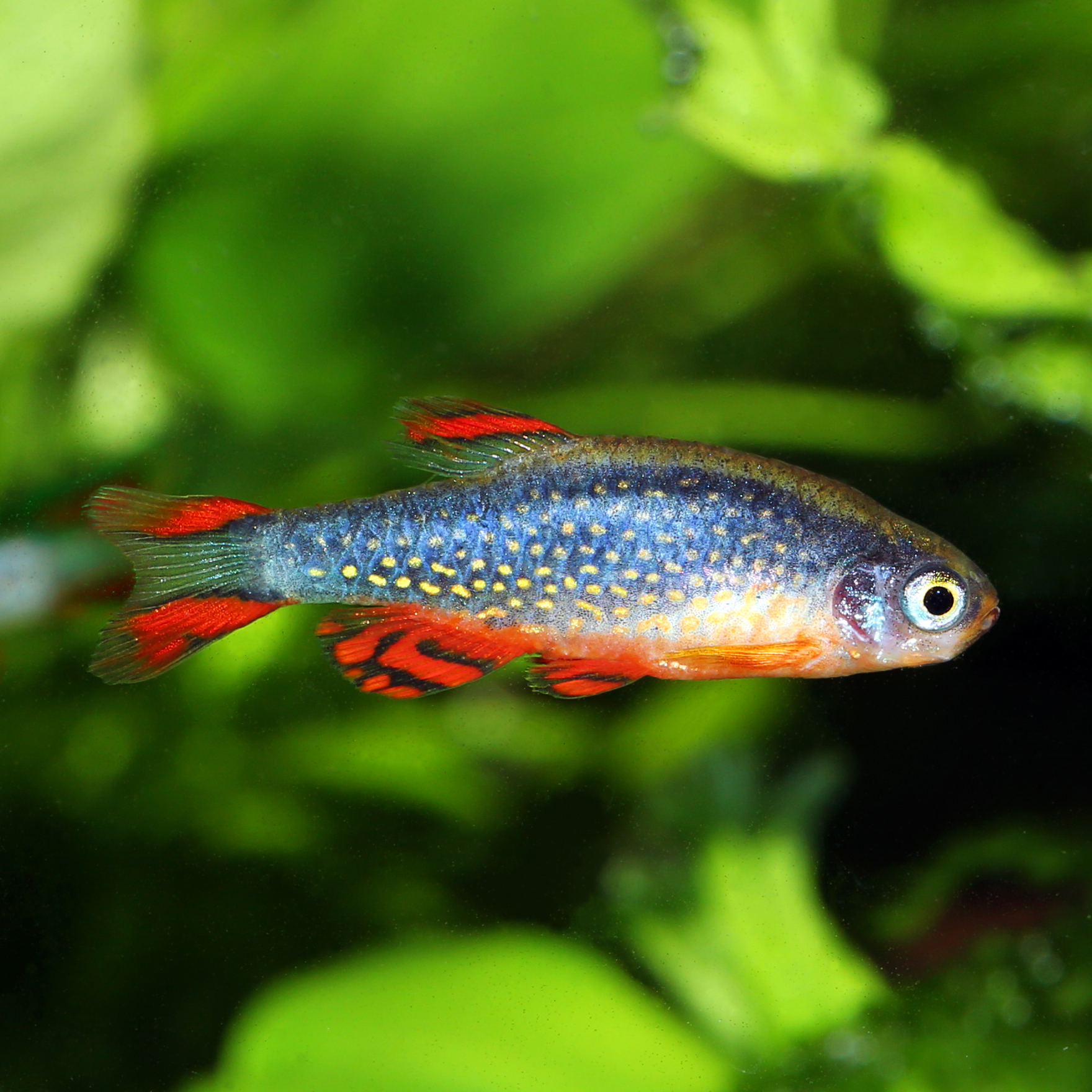Galaxy Rasbora
Danio margaritatus
The contrasting coloring of the Galaxy Rasbora makes it a real feast for the eyes in the aquarium.
- peaceful schooling fish
- beautiful coloring
- only grows to about 2-2.5cm long
1 in stock
 Delivery in a few working days
Delivery in a few working days
 Free shipping from €60 across Austria
Free shipping from €60 across Austria





Important data
Product description & details
The Galaxy Rasbora, also known as Celestial Pearl Danio, is a beautifully colored, peaceful danio from Myanmar and Thailand, which in its natural habitat mainly inhabits slow-flowing streams. Characteristic of this species are the small, light yellow dots, which stand out wonderfully from the dark blue base color. The males in particular also have bright red to orange-red colored fins with a black pattern, which ensures an even more magnificent appearance.
Care in the aquarium
The Galaxy Rasbora, which can grow up to 2.5 cm in size, can be classified as easy to keep. As a somewhat timid fish, it wants to be kept in a group of at least 10 animals and requires dense background and edge vegetation to feel comfortable and safe. However, care should be taken to ensure that the danio has enough swimming space. An edge length of 60 cm is therefore the minimum. In the community tank it can be kept very well together with peaceful fish of approximately the same size, such as dwarf cory catfish or dwarf gourami.
Feeding
In nature, the Galaxy Rasbora feeds primarily on small insects and their larvae as well as small aquatic creatures. The primarily carnivorous (meat-eating) rasboras are particularly happy in the aquarium with live and frozen food types such as artemia, daphnia or enchytraea, but fish food suitable for tetras and rasboras is also readily accepted.
Sexual characteristics and breeding
Female Galaxy Rasboras are a little paler than the males. The anal fin in particular is colored intensely red and black in males, while in females it is largely transparent or only colored at the base of the fin. Soft water is ideal for breeding this beautiful danio. The willingness to spawn can be increased by giving more live food. Once a suitable spawning site has been found in the form of fine-feathered plants or moss cushions, the females lay the eggs between them, where they are fertilized by the male. As is typical for open spawners, no brood care is subsequently carried out. After about 1-2 days, the eggs hatch into fish larvae, which swim freely after about 3-4 more days. The initially very small larvae can be fed with dust food and infusoria and a little later also with newly hatched Artemia nauplii. Since guinea fowl danios are spawning predators, it is best to separate the parents from the future offspring immediately after laying their eggs.





